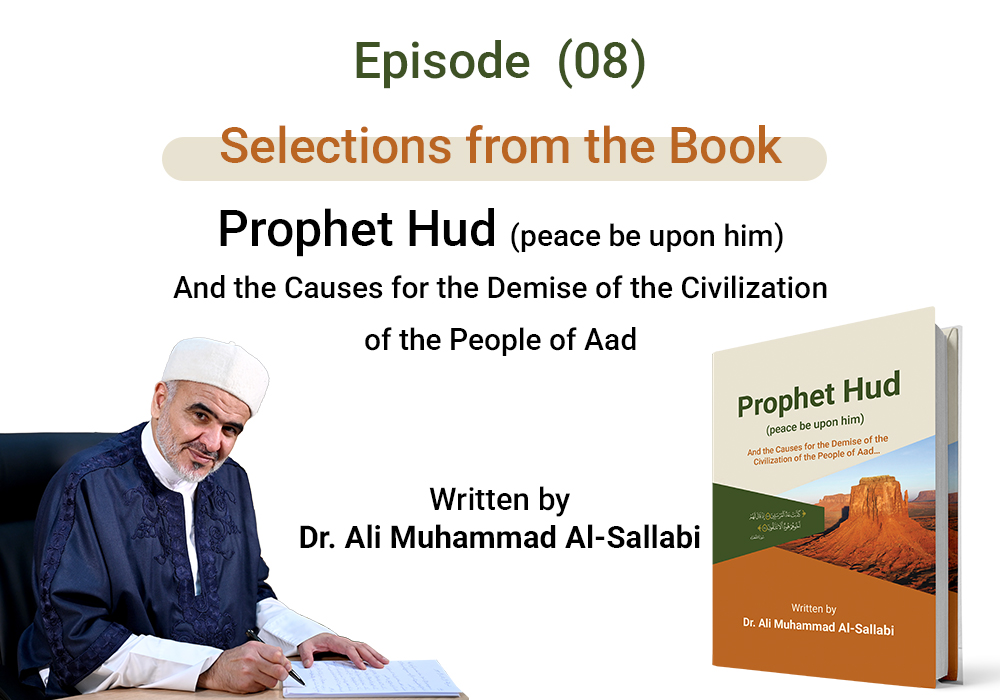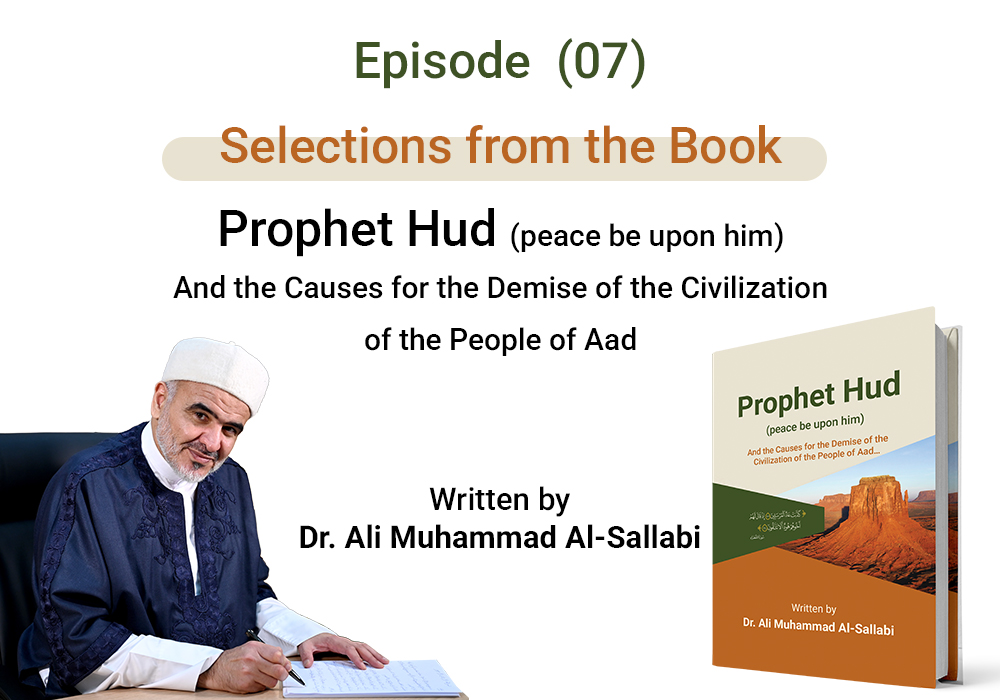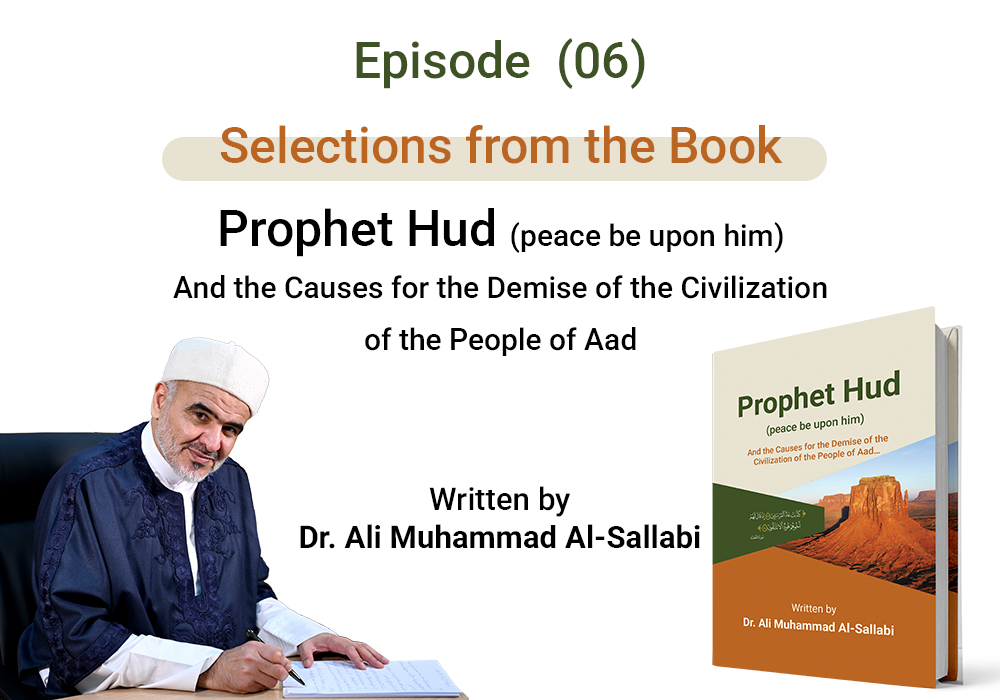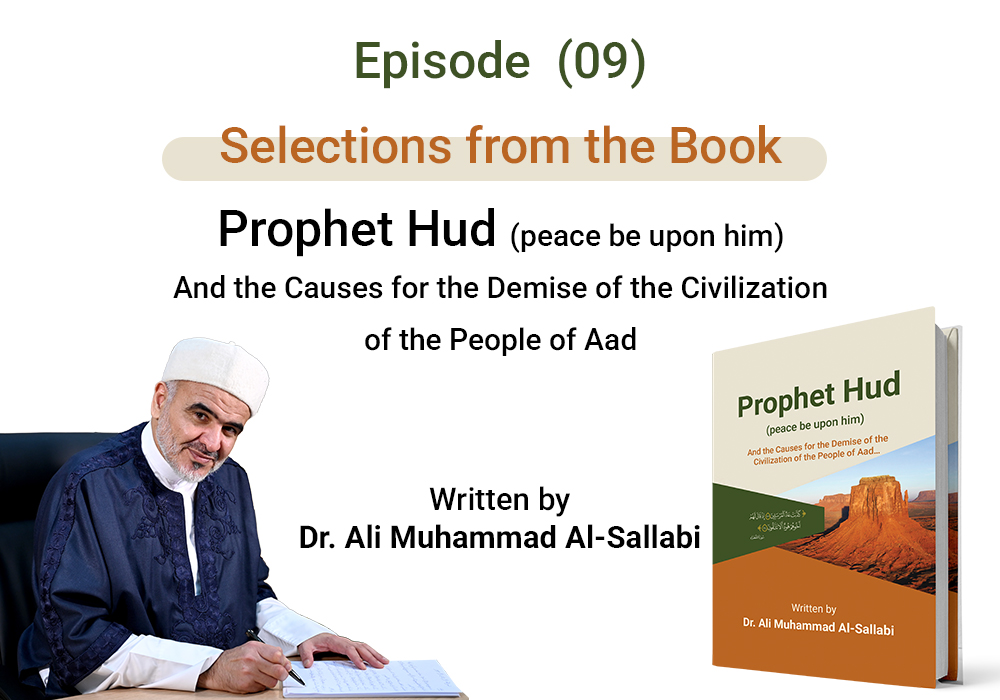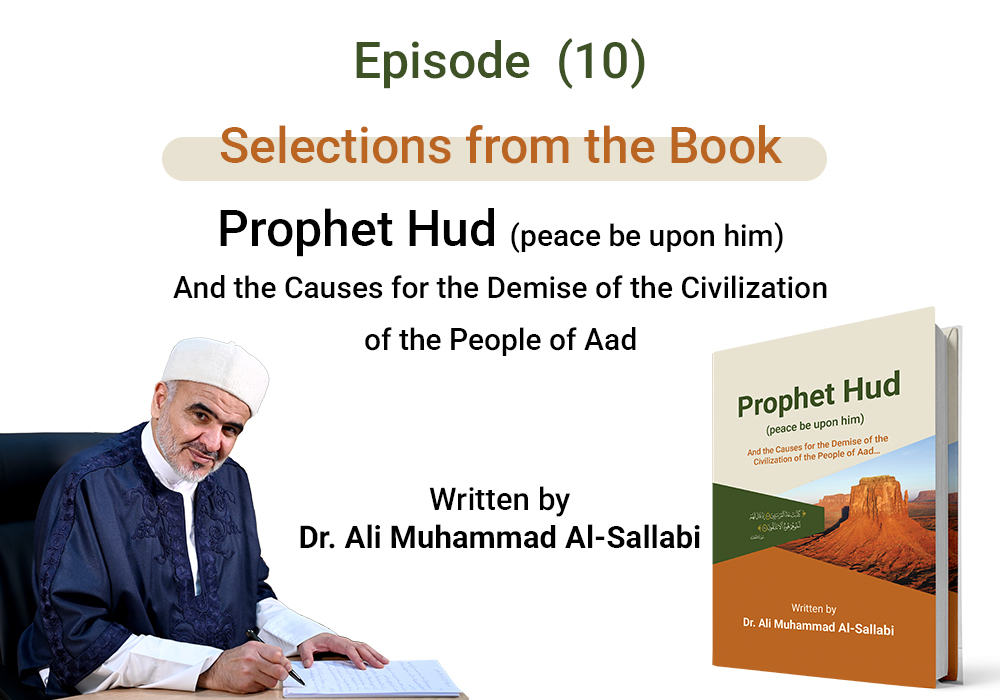The First Dwelling Place of The Semitic Nations
Selections from the Book Prophet Hud (peace be upon him) And the Causes for the Demise of the Civilization of the People of Aad…
Written by Dr. Ali Muhammad al-Sallabi...
Episode (08)
The Semitic nations that formed after the Great Flood settled in various places, but they remained adjacent to one another. The question now is: where did they live when they were in their earliest stage, and their numbers had not yet exceeded a few individuals and families?
Arab historians give one unified answer: their first dwelling place was the land of Arabia. European ethnologists and linguists, however, have four viewpoints in answering this question:
- That their first home was in Africa.
- That the original homeland of the children of Shem was Armenia and Kurdistan.
- That it was on the banks of the Euphrates.
- That it was the land of Arabia.
After presenting the evidence for each group, Sheikh Sulaiman Nadwi said: the strongest, most accurate theory with the most solid evidence and proof is that the original homeland of the Semitic nations was the land of Arabia. This theory is supported by a large number of European and American scholars, among the most prominent of whom are: de Goeje, Schrader, Winckler, Tiele, Meyer, Sprenger, and Nöldeke. From among the English scholars: Kuenen, Robertson Smith, Samuel Enoch, and William Wright. From among the American scholars: Sayce and Rogers. Their summarized evidence is:
- History testifies that nations emerged from the land of Arabia and spread across the world.
- The Arabic language is the closest of all Semitic languages to the ancient Semitic tongue.
- The physical structure of the Arabs is a pure and accurate Semitic form.
- Their social life is a true example of the authentic, primitive Semitic lifestyle.
The land of Arabia, within its natural boundaries (the Arabian Peninsula), has been known since ancient times by this name—“the Island of the Arabs”—and it has been regarded as the center of the inhabited world. Modern research confirms this: it lies at the heart of the ancient world, with the nearest lands being Persia to the east, India to the south, Abyssinia, Sudan, and Egypt to the west, and the Levant, Upper Mesopotamia, and Iraq to the north.
Among what has been said by linguists and specialists in ethnology on this subject:
- The well-known writer and scholar of Semitic languages, Sayce, in his book The Principles of the Assyrian Language, expressing his views on this theory, said: "Semitic traditions from all aspects reveal that their original home is the land of Arabia. This is the only region in the world that remains purely Semitic. Its distinct characteristics—such as intensity in religious devotion, austerity, seclusion from foreigners, and nomadic life—all support what we have mentioned."
- Schrader, expressing his views in a German journal, said: "Religious stories, linguistic research, and geographical and historical investigations all confirm that the original home of all Semitic nations is the land of Arabia."
- What settles this debate is that no nation besides the Arabs has claimed since ancient times that their land is the original home of the children of Shem and the birthplace of the Semitic nations—except the Arabs themselves. They have consistently made this claim, and the truth is that if evidence and indications support them and no one else makes such a claim, then the judgment is in their favor.
Arab historical books have drawn readers’ attention to this issue. Ibn Qutaybah (d. 276 AH) said: “As for Shem son of Noah, he settled in the central land of the sanctuary and its surroundings: Yemen, Hadramawt, Oman, Bahrain, ‘Alij, Bayrin, Wubar, al-Daw, and al-Dahna’.”
His contemporary al-Ya‘qubi (d. 280 AH) said: “The descendants of Shem came to possess the Hijaz, Yemen, and the rest of the land.”
To add to these premises, the Holy Qur’an refers to Mecca with the title Umm al-Qura (Mother of Cities): {And this is a Book which We have sent down, blessed and confirming what was before it, that you may warn the Mother of Cities [i.e., Makkah] and those around it.} [Al-An'am: 92].
- Ali Muhammad al-Sallabi, Prophet Hud (peace be upon him) And the Causes for the Demise of the Civilization of the People of Aad, pp. 185-188.
- The Book of Knowledge, Abu Muhammad Abdullah bin Muslim bin Qutaybah al-Dinawari, edited by Tharwat Okasha, Egyptian General Book Authority, Cairo, second edition, 1992 AD, p. 10.
- History of Al-Yaqubi, Ahmad ibn Ishaq Al-Yaqubi, 1/20.
For further information and review of the sources for the article, see:
The Book of Prophet Hud (peace be upon him) And the Causes for the Demise of the Civilization of the People of Aad on the official website of Sheikh Dr. Ali Muhammad al-Sallabi:


